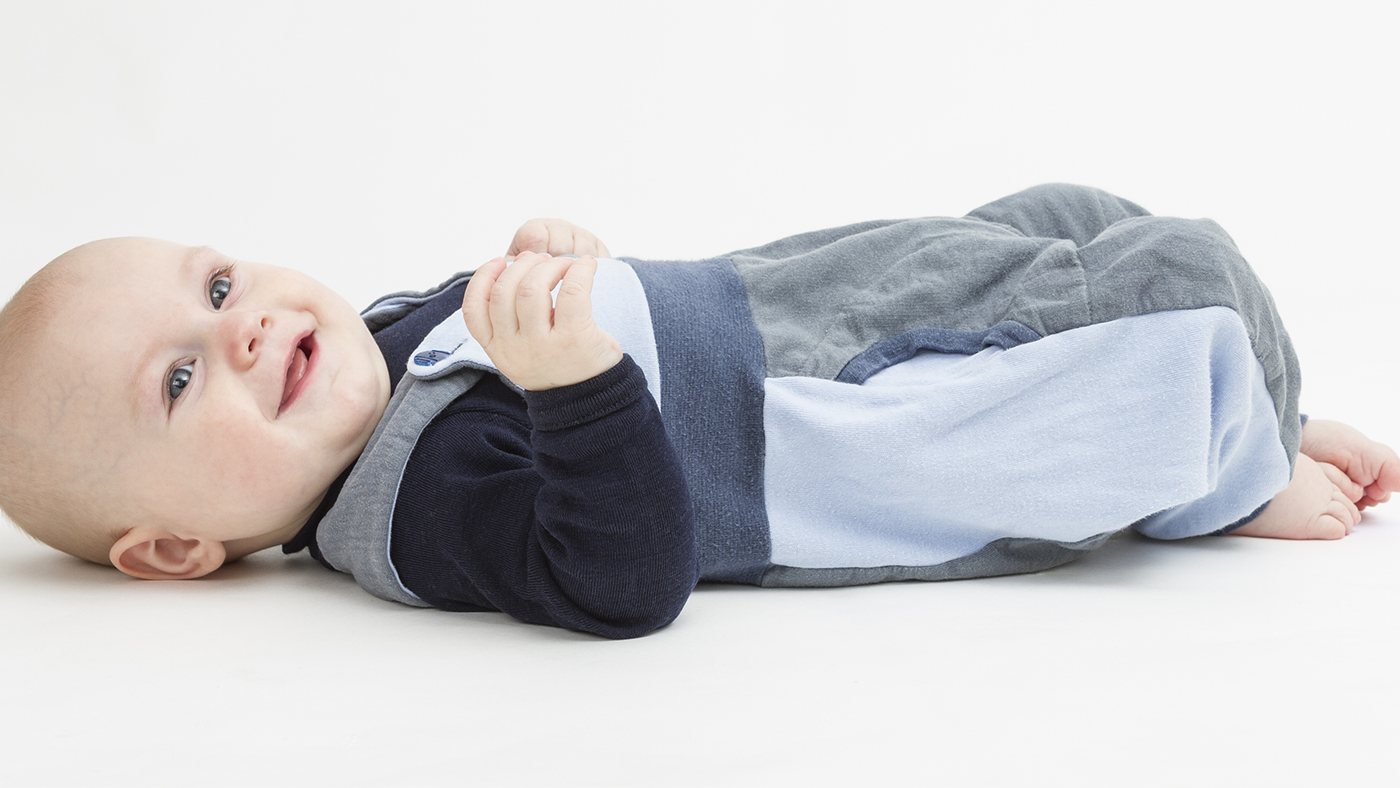Feet down, pelvis up and muscles into action!

Your baby is now making more deliberate motions with their body. You might see them reach out and grab for objects or raise their arms to be lifted as you come close by, wanting to be picked up by you. Your baby might be using their hands and feet in ways you have not noticed before now, for instance, when lying on their back, they may push their feet on floor. They might even be able to push up their pelvis when pushing their feet down.
Your baby's posture and body awareness
Pushing their feet is an important step toward posture control. Your baby’s muscles are growing stronger and helping them work towards huge gross motor milestones such as standing and sitting. Your baby now has greater control over their body movements as they are going through this stage of development.[1]
It's not just their legs doing the legwork...
Although the movement that you observe appears to be just your baby’s legs putting in the work, muscles from their full body will be coming together to support their actions. Your baby's core, neck, arm and leg muscles will be growing in strength at this time.[1]
Your baby is bending and flexing their spine, which will help them balance
Your baby is making connections between spontaneous movements and controlled movements. Motor behaviours can't be used in isolation and the muscles work together to move their body.[2] When your baby pushes their feet on the floor while lying on their back, they are not only defying gravity, but they are flexing their pelvis, exercising their trunk muscles and exploring the extension and flexion in their back. Put simply, this means bending and flexing the spine. These skills are key for when your baby learns to sit and stand, as these motor skills will be used for controlling balance.
They're getting a feel of what stepping will be like
When weight is felt by the feet when lifting the pelvis, this gives your baby an indication of what upright steps may feel like. Leg kicks are generally forward leg movements but in a horizontal position.[2]
As well as this, your baby's sense of body awareness will be developing further. They will now have a stronger sense of what their body is doing, and how to carry out the actions that they want to do. They will also have a better understanding of where their body is in relation to objects and people. [2]
Your baby is on a roll!
Your baby will be working towards rolling when lying on their backs and tummies. The skills seen in this step of development will also be supporting the development of sitting and crawling as their control and strength grows.
References:
[1] Alex Fedde Kalverboer, Brian Hopkins, Reint Geuze, European Network on Longitudinal Studies on Individual Development (1993). Motor development in early and later childhood : longitudinal approaches. London: Cambridge University Press.
[2] K.E. Adolph and J.M. Franchak. (2017) The Development of Motor Behaviour. Wiley Interdiscip Rev Cogn Sci. 2017 Jan; 8(1-2): 10.1002/wcs.1430. Published online 2016 Dec 1. doi: 10.1002/wcs.1430. Available online at The development of motor behavior (nih.gov)
[3] Brain Balance. (2021). Proprioception Explained. Available: https://www.brainbalancecenters.com/blog/proprioception-explained.